It’s been another year of remarkable growth in the influencer marketing industry. The number of brands using influencer marketing has surged over the past year with more than 75% of marketers using influencers as a marketing tool.
In this report, we carefully study the dynamics of changes in key indicators in Influencer marketing such as: the number of followers, likes, comments, engagement rate, influencer fraud, amount of influencers by categories, etc.
To make the study more practical, we examined changes in the overall range of influencers by tiers and specifically for five countries: The United States, The United Kingdom, Germany, France, and Japan.
Also, we have prepared for you a list of Top 100 Fastest Growing Instagram Accounts in 2019.
About HypeAuditor
HypeAuditor is an AI-powered Instagram and YouTube analytics tool that helps to get insights about the creator’s audience, increase advertisers’ ROI, and safeguard authenticity in influencer marketing. It sets a standard for Instagram analytics by providing the most accurate data.
HypeAuditor applies machine learning to determine behavioral patterns and identify fake followers and engagement on influencer accounts. It presents users with a breakdown of demographic data for an influencer’s audience and brings benchmarks for each metric for influencers with a similar number of followers.
Key Findings
Core Instagram audience is 25-34 years old – 48.08%.
The number of users who are 35-44 years old has increased by 5.64%, compared with last year.
The biggest group of influencers is micro-influencers who have between 5K and 20K followers. They represent 50.5% of all influencers.
The majority of influencers create content on Beauty & Fashion (19.2%), Fitness & Yoga (8.6%) and Music (7.3%) themes.
Engagement Rate has decreased badly for all tiers.
The number of fraud-free influencers has decreased for all countries except Japan.
The highest percentage of fraud-free we find in the group of influencers who have between 1K and 5K followers 51.13% of influencers in this group are fraud-free.
The follow/unfollow trick doesn’t work anymore but new growth tricks have appeared such as stories mass looking and mass polling.
We observe a significant increase of growth anomalies for the past year.
48.21% of influencers who have between 5K and 20K have inauthentic followers.
Percentage of influencers who have inauthentic comments and uses Comments Pods declines but still takes up a significant part.
Distribution of Instagram users worldwide as of December 2019, by age group and gender.

The majority of Instagram users are female – 55.5%. Core audience is 25-34 years old – 48.08%.

Compared with last year, the number of users who are 35-44 years old has increased by 5.64%, which means that Instagram is a valuable source of clients not only for brands who work with Millennials but also for those whose clients are from Generation X.
Number of monthly active Instagram users

In mid-2018 Instagram announced that it had reached 1 billion monthly active users, and is now well on its way to the second billion. Compared to the last year we can see a stable growth in US and UK and rapid growth over 25% in Germany and Japan.
Distribution of influencers by profile size group

We break down influencers into five main influencer tiers by the number of Instagram followers:
As the chart illustrates, the biggest group of influencers are micro-influencers who have between 5K and 20K followers. They represent 50.5% of all influencers.
Type of influencers by category
The chart shows the distribution of influencers by specific niches. We see that the biggest categories are Beauty & Fashion (19.2%), Fitness & Yoga (8.6%) and Music (7.3%) The majority of influencers create content on this theme. The least competitive niches are Books & Literature (0.2%) Technology & Science (0.6%), Business and Careers (0.7%).
Influencer’s engagement and impact of hidden likes
Engagement rate
For many marketers, engagement is the most important metric and a popular KPI of brand awareness.
Engagement Rate by Category
Influencers have the highest engagement rate in the categories How-to and Style (3.861%), Sports (3.083%) and Photography (3.301%). Their content gets more likes and comments. Creators who post about Fitness & Yoga have the lowest ER (1.176%).
Engagement Rate 2018 vs 2019
 Engagement Rate has decreased badly for all tiers. We noticed the biggest drop for Mid-tier and Macro-influencers, they lost over 42% of the ER.
Engagement Rate has decreased badly for all tiers. We noticed the biggest drop for Mid-tier and Macro-influencers, they lost over 42% of the ER.
The average engagement and interactions per post Influencers from The United States


The number of likes and comments on the posts of US creators are average compared to other countries.
The most active is the audience of nano-influencers, their average ER is 4.66%. After reaching 20K followers, the creator’s ER drops significantly.
The average engagement and interactions per post Influencers from the United Kingdom


The number of likes and comments on the posts of creators from the UK is average compared to other countries.
The most active is the audience of nano-influencers who have less than 5K followers, their ER is 3.94%. After reaching 20K followers, the creator’s ER drops significantly and after 1M followers is increasing again.
The average engagement and interactions per post Influencers from France


The Audience of french influencers is medium-active, but we’ve noticed the highest ER in nano-influencers segment, their ER is 5.96%.
The average engagement and interactions per post Influencers from Germany


Creators from Germany have active audience, their ER does not fall below 2.20%. It is worth noting that their audience loves to comment on posts, the average number of comments is the highest among other countries in our research.
The average engagement and interactions per post Influencers from Japan

Influencers from Japan have the most active audience, their ER does not fall below 2.75%. Worth noting that Japan has the second place between the top 10 countries with the highest ER. Japan with average ER 4.93% goes immediately after Greece which has 5.17%
Hidden likes
In May 2019, Instagram began testing a new feature in Canada that would hide public like counts on all photo and video posts. In Canada after the introduction of the experiment, the number of likes decreased by 9.4%.
From June Instagram expanded the test to several more countries, including Australia, Brazil, Ireland, Italy, Japan, and New Zealand.
At HypeAuditor we decided to analyze how hiding like counts has affected the influencers’ performance. We selected a sample of influencers who have at least 30% of followers from Australia, Brazil, Japan, Ireland and Italy (154 809 influencers in total).
We divided them into 4 tiers based on their number of followers and compared their average number of likes in May and September.
Instagram didn’t hide like counts in the United Kingdom, so we could compare the changes of the average number of likes in Australia, Brazil, Japan, Ireland, and Italy with the UK.

 The comparison of the change in the average number of likes in May and September for nano-influencers (1-5K)
The comparison of the change in the average number of likes in May and September for nano-influencers (1-5K)
The biggest change in average likes has happened in Australia and Brazil.

 The comparison of the change in the average number of likes in May and September for micro-influencers (5-20K)
The comparison of the change in the average number of likes in May and September for micro-influencers (5-20K)
Micro-influencers (5K – 20K) from Australia received in September 15% fewer likes than in May. Their engagement rate has dropped from 1.8% to 1.5%.

Mid-tier Influencers (20K – 100K) from Brazil received in September 29% fewer likes than in May. Their engagement has dropped from 1.9% to 1.5%.
Ireland and Italy have minor changes. Influencers from Ireland and Italy received in September 4% fewer likes than in May.

 The comparison of the change in the average number of likes in May and September for macro-influencers (100-1M)
The comparison of the change in the average number of likes in May and September for macro-influencers (100-1M)
In the UK, where like counts were not hidden, all influencer tiers except macro-influencers(100K – 1M) showed a fall in the average number of likes up to 8.6%.
Influencers from Japan vice versa showed growth in the average number of likes.
For example, micro-influencers received in September 6.38% more likes than in May. Worth mentioning that Japan influencers have one of the highest engagement rates in the World – 4.93%.
Influencer Fraud
Is Influencer Fraud a thing?
According to our research the Instagram Influencer market reached $5.24 billion in 2019, and despite COVID-19 it will not fall below $5 billion in 2020.
The market growth is directly linked with the cost-per-post value. How much a blogger would charge for a sponsored post hinges on one’s likes averaged per post and number of followers. This is the reason why fraud eventually became a thing: unscrupulous bloggers start buying likes and comments in bulk so that they can earn more money from the brands.
Influencer fraud is so common that marketing budgets are being impacted by it all over the world. 63% of marketing specialists have personal experience of influencer marketing fraud in their past campaigns.
What is influencer fraud?
Organic Instagram growth is a long and arduous process. Not all influencers are ready to invest their time and money on it. Besides, there are tons of apps and websites that attempt to get followers, likes and comments immediately, in any quantity and without a large budget.
The fraud starts when these impatient influencers connect with brands to advertise their products and services. Usually, a brand agrees to pay a fee based on the number of followers the influencer has and ends up wasting their time and money.
How do influencers inflate their numbers?
Among the most popular tricks are:
Buying followers.
Follow/unfollow.
Buying likes and comments.
Buying stories views.
Comments Pods.
Fraud-Free influencers
At HypeAuditor we believe that an influencer with a big percentage of real people among followers, authentic engagement and without anomalies on followers and followings graph is Fraud-Free.
How to detect influencer fraud?
You can check any account for these 4 signs of cheating on your own:
You can go through these steps every time you want to analyze someone’s page.
1. Run through the list of the followers and mark the ones you think might be “the bad, inflated ones”.
2. After that, check the likes on the past 12 posts of a person.
3. Then you should check all the comments and pages of the accounts who wrote them.
Fraud-Free influencers by countries
 The lowest rate of fraud-free influencers was detected in Germany (35.55%),
The lowest rate of fraud-free influencers was detected in Germany (35.55%),
The influencers in Japan, the UK, and France have the highest quality. Over 40% of influencers in these countries are authentic.
Percentage of Fraud-Free influencers by followers number
 The highest percentage of fraud-free we find in the group of influencers who have between 1K and 5K followers.
The highest percentage of fraud-free we find in the group of influencers who have between 1K and 5K followers.
51.13% of influencers in this group are fraud-free. The lowest authenticity rate has influencers who have over 1M followers and between 20K and 100K followers.
In the first case, we believe it’s due to the large amount of spam, in the second, due to inauthentic methods of Instagram growth.
The end of follow/unfollow trick
On the 5th of June 2019, Instagram began to massively action block accounts that use third-party apps for automatic following and unfollowing.
The follow/unfollow method was the most popular trick to gain new followers with very simple mechanics:
An influencer chooses their target audience (using hashtags, geotags or competitor’s account).
The app is starting to follow the targeted audience. And some accounts will follow the influencer back.
As influencer, using the same app, unfollow all new followers after a couple of days. This becomes a cycle.
According to HypeAuditor’s internal research, up to 28% of influencers with less than 100K followers used the follow/unfollow trick to grow their number of followers.


Percentage of influencers who used Follow/Unfollow by followers number
An unannounced Instagram update in June 2019 rapidly changed the whole industry of Instagram automation. Experts say that Instagram could have changed their limits for actions from one IP. This made follow/unfollow activity more expensive and less effective.
To check how this update has impacted influencers’ methods, HypeAuditor selected a sample of 21K influencers from different countries who had been using follow/unfollow for at least three months. Their following activity was then checked in April and then in June and July when users started to complain about action blocks.
As of April 2019, exactly 21,173 influencers were using follow/unfollow. In June, however, this number rapidly dropped to 3,492. You can see these changes in the graph below:


The number of influencers who use follow/unfollow has declined by almost 84 percent.
HypeAuditor automatically detects follow/unfollow activity on the following growth graph. Since June 2019 most influencers have the following pattern on the graph:
The Follow/Unfollow trick doesn’t work anymore but the majority of its users just switched to mass viewing and comments mass liking.
Stories mass viewing is generating inauthentic activity by watching the Instagram Stories of thousands of people based on hashtags, geo, or competitors’ account. After an interaction, some followers transform into visitors to your account and take some actions: likes, comments, subscriptions.
Instagram has started its war with inauthentic activity and their first steps are very promising. They’ve already changed the way of automation, and we are waiting for further actions in 2020.
Abnormal Growth
Most of the influencers increase their number of followers gradually. Every month more and more Instagram users are starting to follow them. Some promotion methods, advertising, mentions in media or a shoutout from another influencer could accelerate the growth, but nevertheless, the general pattern remains the same. However, some bloggers do not want to wait and use inauthentic methods to increase their number of followers immediately.
How to Detect Inauthentic Growth?
To detect growth anomalies you should check the Followers graph that shows the dynamics of audience growth. Analysis of this graph gives a lot of information about the account’s growth patterns and trends helping to detect if an influencer has bought followers.
Accounts that increase their number of followers artificially will show sudden spikes and hockey-stick growth on a Followers graph.
Who are these inauthentic followers?
Inauthentic followers could be classified into two categories:
Mass followers
Instagram users with more than 1500 followings are identified as Mass Followers.
They use automatic tools for Follow/Unfollow, namely subscribe to an influencer to make them follow back. Mass followers don’t see the influencer’s posts.
Suspicious accounts
Bots, fake or stolen accounts and people who use specific services for bulk purchases of likes, comments and followers.
The percentage of Growth Anomalies on influencers accounts by country
 We observe a significant increase of growth anomalies for the past year. We have detected that over 38.03% of influencers from Germany grow their followers using inauthentic methods. The most popular among them are buying followers and participate in loop giveaways.
We observe a significant increase of growth anomalies for the past year. We have detected that over 38.03% of influencers from Germany grow their followers using inauthentic methods. The most popular among them are buying followers and participate in loop giveaways.
We have also noticed the high rate of growth anomalies among US influencers.
Only 23.92% of influencers from Japan have anomalies on their follower growth rate, it’s the lowest result among all countries.
The percentage of Growth Anomalies on influencers accounts by followers number


Influencers with over 1M followers have the lowest rates of growth anomalies. In most cases, their followers have been growing organically. We see the opposite results in the groups of influencers who have between 5K and 20K followers and 20K and 100K followers. 48.21% and 33.52% of them respectively buy followers to grow their followers number.
Inauthentic Comments
What comments are inauthentic?
Comments to tag-to-win giveaways and contests, spammy comments, and comments that come from Instagram Pods are considered inauthentic.
How to detect them?
When we check Comments Authenticity, we take into account multiple factors, among them: commenter’s content and the quality of an account that left that comment. We mark comments as suspicious when they:
Consist of emojis only or words like: wow, cool, fantastic etc.
Are monosyllabically simple and irrelevant.
Consist of the mention of another account only.
Percentage of influencers who have Inauthentic Comments by country

Influencers from Japan have the highest rates of comments authenticity, only 18.55% of influencers respectively use inauthentic methods to grow their comments number. US and Germany have the biggest rate of influencers who grow their comments using suspicious methods.
Percentage of influencers who have inauthentic comments by followers number
 Influencers with over 1M followers have the highest rate of inauthentic comments but in most cases, it is not because of their actions, but spam methods that use other influencers and Instagram users to grow their accounts.
Influencers with over 1M followers have the highest rate of inauthentic comments but in most cases, it is not because of their actions, but spam methods that use other influencers and Instagram users to grow their accounts.
Nano-influencers with less than 5K followers have the lowest rate.
Comments Pods
What is a Comment Pod?
Comment pods (Engagement Pods or Boost Groups) are groups of bloggers collaborating to run up their activity. They often gather on Facebook, Telegram or other chats.
A blogger from such pod would make a post and throw a link to the chat with some comment: “likes, comments (3 words and more), saved.”
And then they would go up the chat to see the last 10 tasks from other bloggers and carry them out.
This method is definitely hard to see with eyes only as there are real people with real accounts and high-quality content, and they would write extended comments.
How to detect them?
It’s hard and time-consuming to detect engagement pods manually.
To do this, you should check every comment and a follower who left them. If you see that all posts are commented by the same group of users, it might be a pod.
To detect pods at HypeAuditor we use machine-learning algorithm that takes into account multiple factors, among them: behavioral patterns, commenter’s content and the quality of an account that left that comment.
Percentage of influencers who use Comment Pods by followers number

Engagement Pods are widespread among influencers who have between 1K and 20K followers. They can easily boost their engagement rate using this method because each new comment will affect the ER.
When the amount of followers is bigger, comments pods have less impact on the ER and they become non-effective. Medium and macro-influencers prefer to buy comments instead of waste their time in engagement groups.
Percentage of influencers who use Comment Pods by country


We’ve noticed a bigger widespread of Comments Pods in Italy (17.34%), Germany (15.82%), France (13.84%), and Russia (13.01%).
Influencers in the US, India, Brazil, and Japan prefer to buy comments instead of using pods.
Top 10 Instagram influencers by number of quality and engaged followers

We’ve analyzed millions of bloggers and ranked them by number of real followers and authentic engagement (number of likes and comments that come from real people and influencers).
The list is almost the same as in 2018, with the exception of three participants: Justin Bibier, Instagram and Demi Lovato have left the list. Selena Gomez, Taylor Swift and Billie Eilish took their place.
Accounts that showed the biggest growth of new quality subscribers by niche
Instagram is removing likes but remains followers’ number. Followers’ number still stays the core indicator of popularity on Instagram.
HypeAuditor made a list of top 100 Instagram accounts that scored the largest number of followers for 2019.
KEY FINDINGS
The majority of Instagram accounts from the list belong to actors and singers from the United States.
Three Instagram accounts: Jenniferaniston(12), sussexroyal(82) and gretathunberg(98) showed an incredible percentage growth.
The account of an American actress Jennifer Aniston grew by 10 850% from 200 K followers to 21.9 M followers.
The official Instagram account of The Duke and Duchess of Sussex grew by 8 900% from 100 K followers to 9 M followers.
The account of climate activist Greta Thunberg grew by 4 850% from 200K followers to 9.9M followers.
The only DJ from the list is Christopher Comstock, known professionally as Marshmello. His account marshmellomusic(45) gained 13M new followers.
The only cricketer is Virat Kohli is an Indian cricketer who currently captains the India national team. His account virat.kohli (19) gained 18M new followers.
13 Instagram accounts from the list are owned by actors and singers from India: aliaabhatt (35), priyankachopra (41), nehakakkar (42), katrinakaif (44) , sunnyleone (52), dishapatani (57), kritisanon (58),
shraddhakapoor (59), deepikapadukone (60), akshaykumar (67), ranveersingh (72), jannatzubair29 (94), urvashirautela (96).
5 from 100 Instagram accounts are owned by mediapersons who started their career in the reality television show Keeping Up with the Kardashians:
kyliejenner (6), kimkardashian (7), kendalljenner (18), khloekardashian (22), kourtneykardash (48).
4 from 100 Instagram accounts are owned by members of the girl group Blackpink: lalalalisa_m (30), jennierubyjane (54), roses_are_rosie (61), sooyaaa__ (79)
4 from 100 Instagram accounts are owned by football clubs: fcbarcelona (24), realmadrid (32), juventus (33), liverpoolfc (74).
Top 100 Fastest Growing Instagram Accounts in 2019
| № | Account | Followers Growth | Followers | ER | Category |
|---|---|---|---|---|---|
| 1 | 49.2 M | 322.5 M | 0.16% | Brand | |
| 2 | cristiano | 43.4 M | 193.4 M | 2.66% | Soccer |
| 3 | therock | 38 M | 165 M | 0.7% | Actor |
| 4 | leomessi | 33.6 M | 138.9 M | 3.32% | Soccer |
| 5 | natgeo | 31.8 M | 128.3 M | 0.22% | Brand |
| 6 | kyliejenner | 30.8 M | 153.9 M | 3.06% | Media personality |
| 7 | kimkardashian | 30.4M | 154.3 M | 1.48% | Media personality |
| 8 | arianagrande | 26.1 M | 169 M | 1.12% | Singer |
| 9 | billieeilish | 24.1 M | 45.4 M | 14.32% | Singer |
| 10 | mileycyrus | 23.6 M | 102.3 M | 0.83% | Singer |
| 11 | jlo | 23 M | 107.4 M | 0.48% | Actress |
| 12 | jenniferaniston | 21.7 M | 21.9 M | 17.64% | Actress |
| 13 | neymarjr | 21.2 M | 130.1 M | 0.98% | Soccer |
| 14 | championsleague | 19.7 M | 52.3 M | 0.93% | Soccer |
| 15 | tomholland2013 | 19.4 M | 32.6 M | 8.25% | Actor |
| 16 | selenagomez | 19.3 M | 163.9 M | 2.69% | Singer |
| 17 | justinbieber | 19 M | 122.9 M | 0.28% | Singer |
| 18 | kendalljenner | 18.7 M | 120.1 M | 2.94% | Media personality |
| 19 | virat.kohli | 18 M | 46 M | 3.76% | Indian cricketer |
| 20 | theellenshow | 17.5 M | 80.8 M | 0.31% | Comedian |
More information about Top 100 Fastest Growing Instagram Accounts in 2019 can be found by the link.
Methodology
This research report was conducted by HypeAuditor to understand the current and future state of influencer marketing.
The report uses data from a wide variety of sources, including market research agencies, internet, and social media companies, news media, and our own internal analysis.
For HypeAuditor internal analysis, we have collected and aggregated open data from a variety of sources: social platforms, catalogs, websites, crowdsourcing, and many more.
After that, we processed the data by anonymizing, sorting and structuring, cleaning and removing any irregularities, and enriching the data.
Then we transformed the data into intelligent estimations by using best-in-class machine learning algorithms developed by our team of leading data scientists and influencer marketing experts.

















